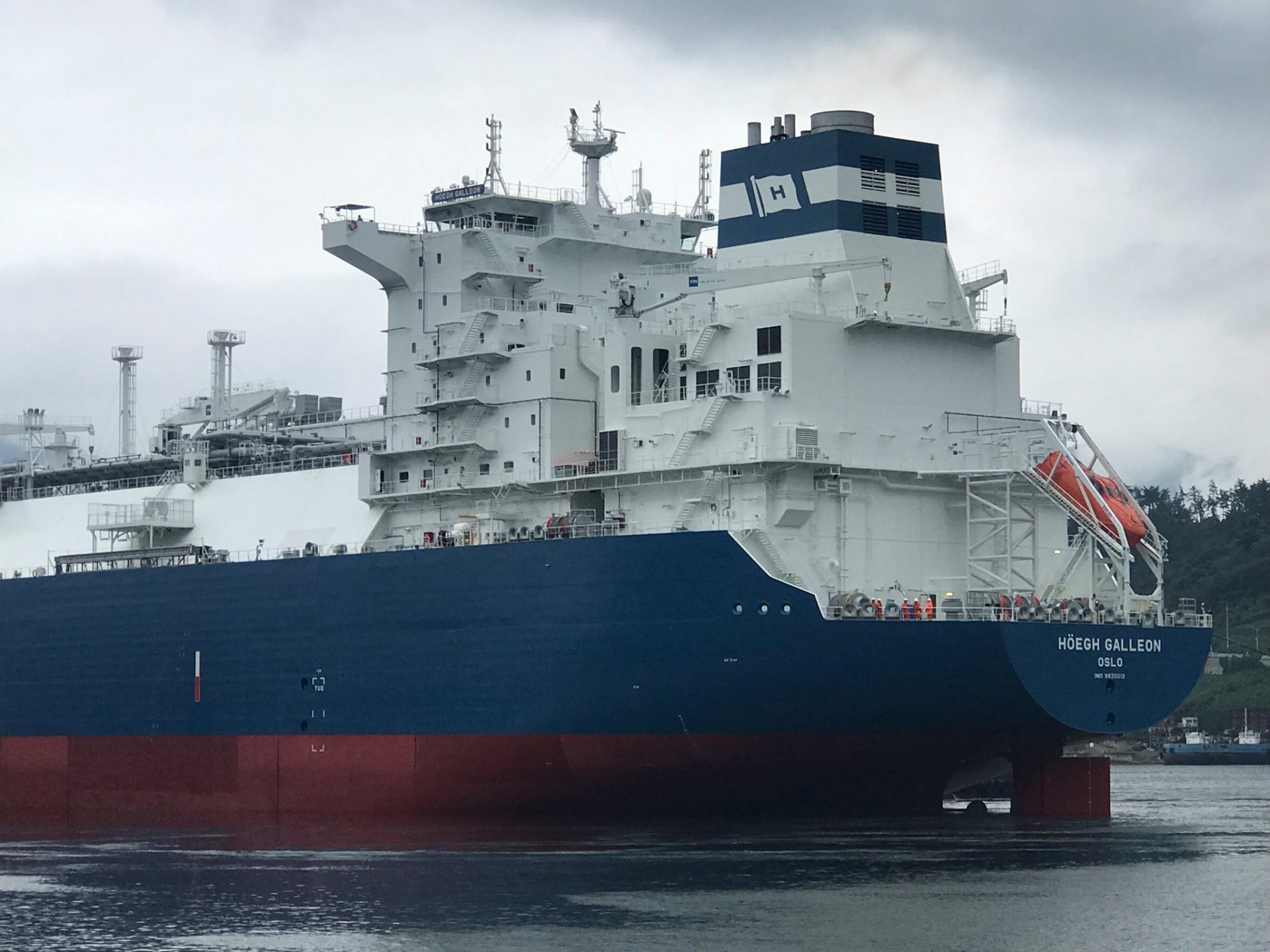The Egyptian Natural Gas Holding Company (EGAS) has chartered Hoegh LNG’s floating storage regasification and storage unit, Hoegh Galleon, to deploy it in the Ain Sokhna port and address potential gas shortages in its domestic market, according to a report by Wood Mackenzie.
Wood Mackenzie’s senior research analyst for global LNG, Fraser Carson, said in the report published on April 22 that the charter is for a period of 18 months, starting in June this year.
LNG Prime contacted both EGAS and Hoegh LNG to confirm the charter deal and provide additional information, but we did not receive a reply by the time this article was published.
Hoegh LNG said in November last year that the 2019-built FSRU Hoegh Galleon had started its long-term charter with Squadron Energy’s Australian Industrial Energy (AIE).
AIE is currently working on its Port Kembla import terminal in New South Wales to prepare the facility for the arrival of the FSRU with a regas capacity of 384 mmscf/d.
Squadron Energy’s latest update said that the terminal is more than 90 percent completed and the “timing of the FSRU’s arrival remains on track for 2026.”
Gas shortfalls
Last year, Italy’s Snam completed the purchase of BW LNG’s 2015-built FSRU BW Singapore for about $400 million and plans to install it off the coast of Ravenna.
The FSRU worked in Egypt’s Ain Sokhna under a charter with EGAS which expired in November.
Prior to this unit, Hoegh LNG’s FSRU Hoegh Gallant worked in Ain Sohna under a charter deal from 2015 until 2018.
Egypt imports LNG despite the fact that it hosts two LNG export facilities, namely the Eni-led Damietta LNG terminal and the Shell-led Idku plant.
The country began experiencing gas shortfalls in 2022.
The giant Zohr field, which contributes around 35 percent of the country’s total gas production, experienced water breakthrough earlier than expected, reducing its output well below daily contracted quantities of 2.7 bcfd, Wood Mackenzie said in the report.
Gas from other increasingly mature Nile Delta fields continues to decline and exploration since Zohr has mostly disappointed, it said.
The report said that Egypt became a net gas importer in the first half of 2023 and has become increasingly reliant on piped Israeli imports to balance its market.
“It also contractually obligated to continue exporting LNG from the Damietta LNG facility – despite the gas shortfall – but this could be restricted to only a handful of cargoes during the winter,” the report said.

Last year, Israel shut down the Tamar gas processing platform due to security concern.
Tamar’s outage had a “significant” impact on the region’s gas flows, not least for Egypt, the report said.
“With Israel prioritizing its domestic gas market, exports to Egypt briefly dropped from 800 mmcfd to below 200 mmcfd. But even with Tamar back onstream, gas availability and infrastructure constraints limit Egypt’s ability to balance its market with piped imports alone,” the report said.
LNG will help to mitigate deficit
Longer term, Wood Mackenzie expects Egypt to import more piped gas from Israel.
It also expects Cypriot gas to supply Egypt but not until late this decade.
Egypt will also develop renewables and nuclear to reduce dependency on gas, it said.
But in the meantime, LNG will help to mitigate the deficit, Wood Mackenzie said.
“Cargoes are more affordable than one year ago; the “risk premium” attached to pricing has largely disappeared due to the diminishing threat of supply disruption,” it said.
The report noted that European gas storage is “well stocked” for the time of year and Asian LNG inventories remain close to the five-year average.
The LNG shipping market is “long and is expected to remain so until the end of 2025,” it said.
Additionally, Egypt has secured over $50 billion in funding from banks, international institutions, and regional allies, which will support the Galleon’s charter cost and facilitate the immediate procurement of LNG supplies, Wood Mackenzie said.

